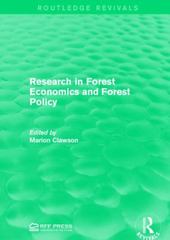Question
1 Immigration, Wage Equalization and Difference-in-Difference Estimator Suppose we have two cities: Miami and Atlanta. Individuals expect to live 10 years, face an interest rate
1 Immigration, Wage Equalization and Difference-in-Difference Estimator
Suppose we have two
cities: Miami and Atlanta. Individuals expect to live 10 years, face an interest rate of 0%
per year. Workers in each city have a yearly labor supply given by h(w) = 8 (e.g., workers
always work 8 hours a year). Firms face competitive input and output markets and the
yearly production technology of firms in each city is f(E) = 2 produced. Suppose that both Miami and Atlanta have initially 50 workers and 16 firms. Suppose that there is an immigration wave raising the labor supply of Miami by 50 workers.
We showed in PS5 that the demand for labor is given by
D p2 E (w)=16 w .
Let t = 0 denote the time before the immigration wave. Let t = 1 denote the time when immigrants come to Miami. Assume that there is no internal migration at time t = 1. Let t = 2 denote the time of internal migration when some workers move from Miami to Atlanta. In PS5, we computed wages in Miami and Atlanta at t = 0 and t = 1.
t = 0 : w0,Miami = w0,Atlanta = 2 t = 1 : w1,M iami = 1.41, w1,Atlanta = 2
Question 1.1 What are the wages in Miami and Atlanta at time t = 2 if 16 workers move from Miami to Atlanta?
Question 1.2 Show that after 16 workers move from Miami from Atlanta, nobody else wants to move. The moving cost is $17.
1
E. Firms get $10 per unit
Question 1.3 We are going to use these data to construct the difference-in-difference esti- mator. The treatment group is Miami, the control group is Atlanta. The before-treatment period is t = 0. The after-treatment period is either t = 1 or t = 2. Compute the difference- in-difference estimator of impact of immigration on wages if the after-treatment period is t = 1. Compute the difference-in-difference estimator of impact of immigration on wages if the after-treatment period is t = 2.
Question 1.4 Why is the estimated impact of immigration on wages stronger when you use t = 1 than when you use t = 2?
Question 1.5 Suppose the moving costs decrease to something lower than $17. How will that affect the estimated effect of immigration on wages? That is, would your difference- in-difference estimate using t = 1 period be bigger or smaller than when moving cost is C = 17? Would your difference-in-difference estimate using t = 2 period be higher or lower than when moving costs is C = 17? You don't need to do any additional calculation, a solid verbal argument is sufficient. (Of course, you can do additional calculations if you wish to.)
Question 1.6 Which estimator is valid? That is, are the assumptions for internal validity of difference-in-difference satisfied when you use t = 1 as after-treatment period? Are they satisfied when you use t = 2?
Step by Step Solution
There are 3 Steps involved in it
Step: 1

Get Instant Access to Expert-Tailored Solutions
See step-by-step solutions with expert insights and AI powered tools for academic success
Step: 2

Step: 3

Ace Your Homework with AI
Get the answers you need in no time with our AI-driven, step-by-step assistance
Get Started


